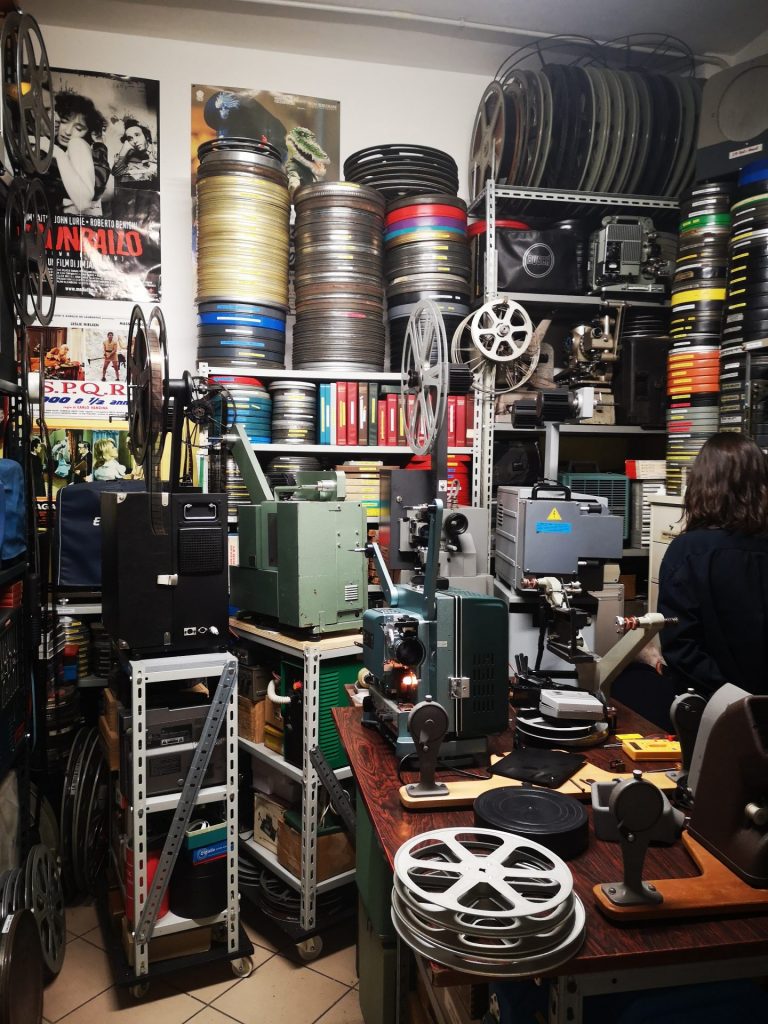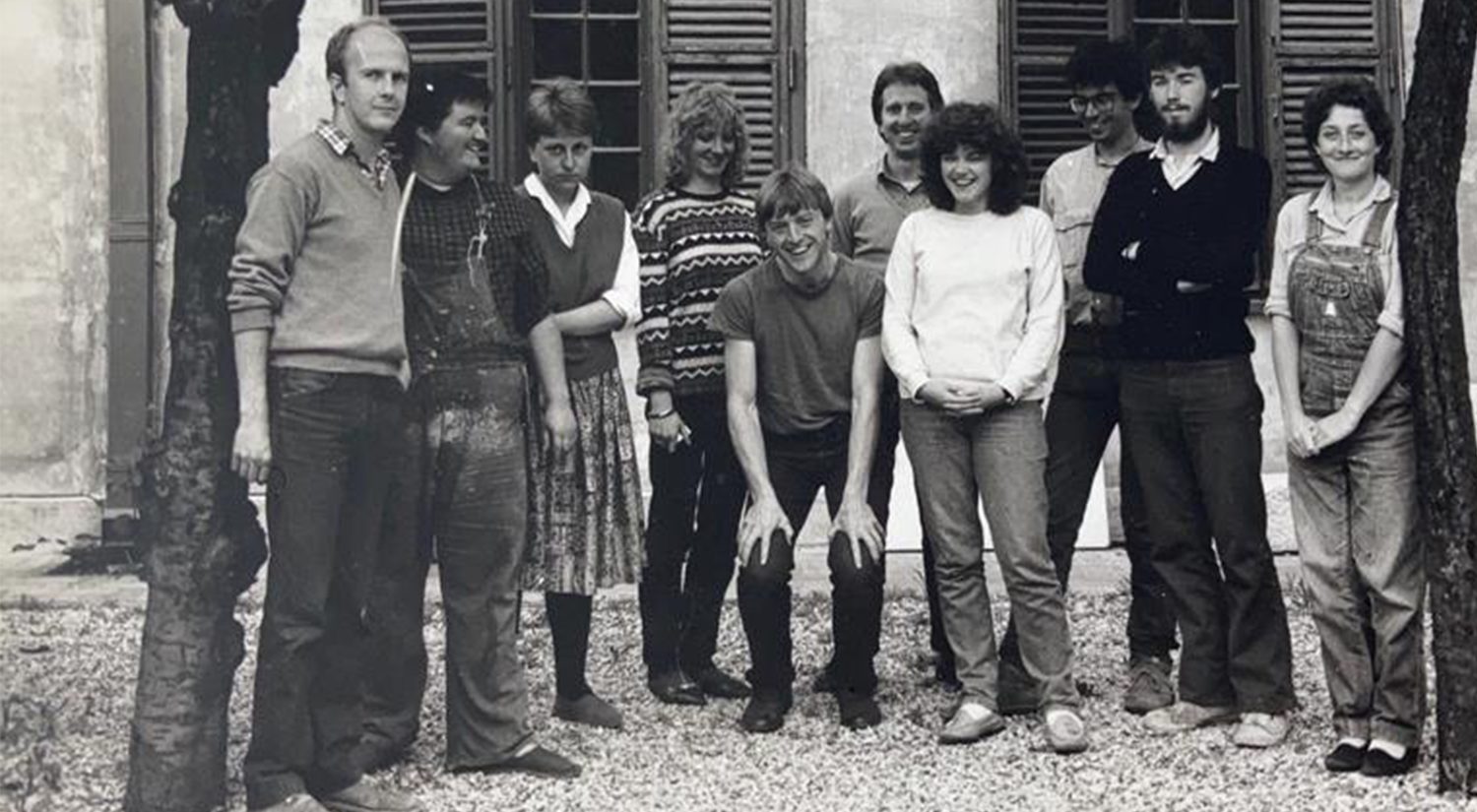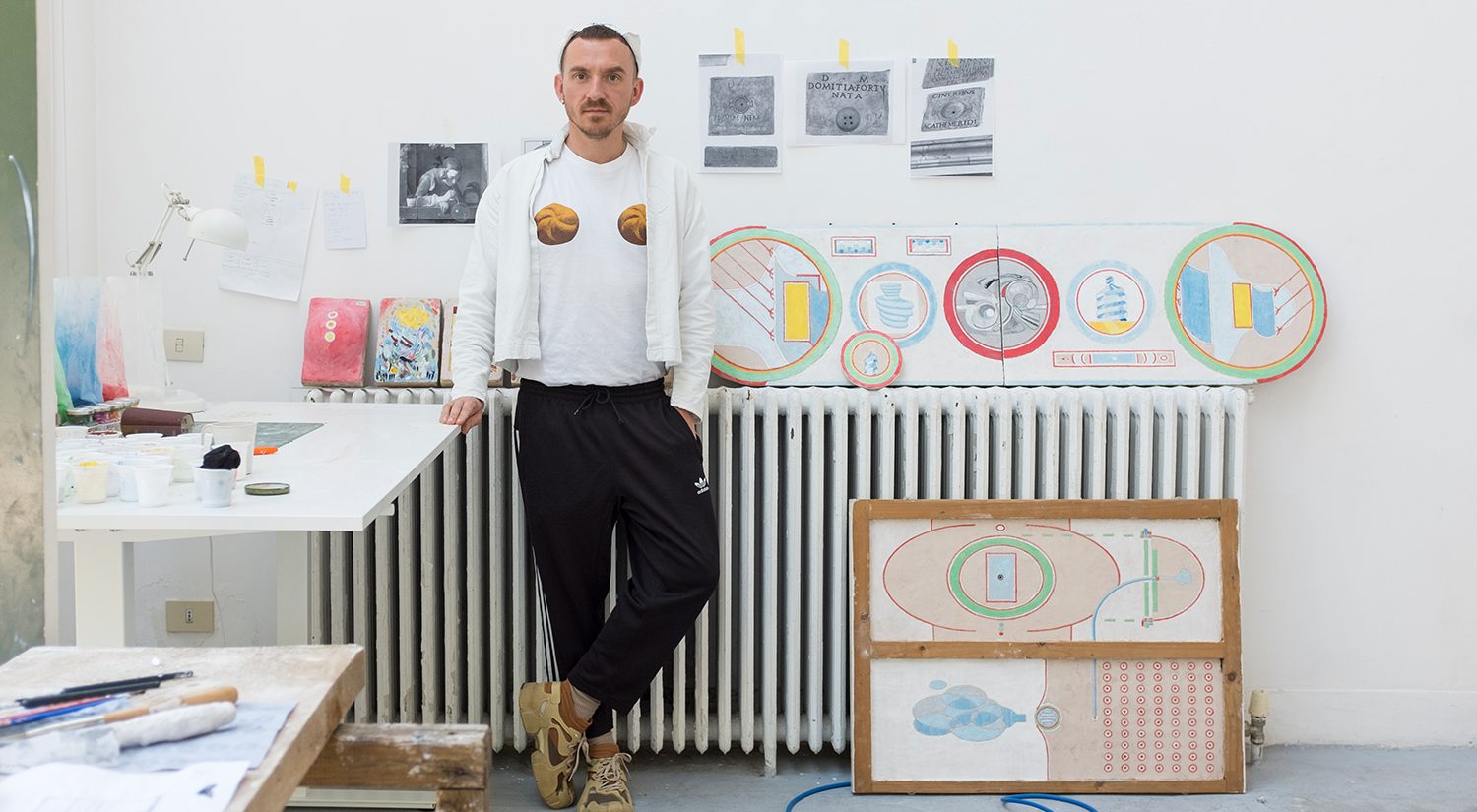An interview with Catriona Gallagher, winner of The Bridget Riley Fellow, in which she speaks about the work she has produced during her residency at the BSR from January – March 2023, ahead of the Winter Open Studios.
You’re coming to the end of your six-month residency. Has your project changed during this time and how?
My project started with human-plant hybrids broadly and has settled more specifically on the persistent symbolism of bay-laurel in Rome over two millennia. Daphne’s mythological metamorphosis into a bay-laurel tree as salvation from the desire of Apollo resulted in her losing personhood, and remaining trapped as Apollo’s symbol anyway, a trope which still echoes in European visual culture. I’m placing imagery of bay-laurel used as a herb for cooking, a tree for hedging and as foliage for making wreaths, alongside the story of the woman trapped inside the symbol to which she only seemed to consent.
In January, Ampersand Fellow Laura White and I devised a collaborative bay themed dinner, with bay featuring in the starter, main course and dessert. Its subtle flavour was given centre stage and our diners were encouraged to think about Daphne in a different way.
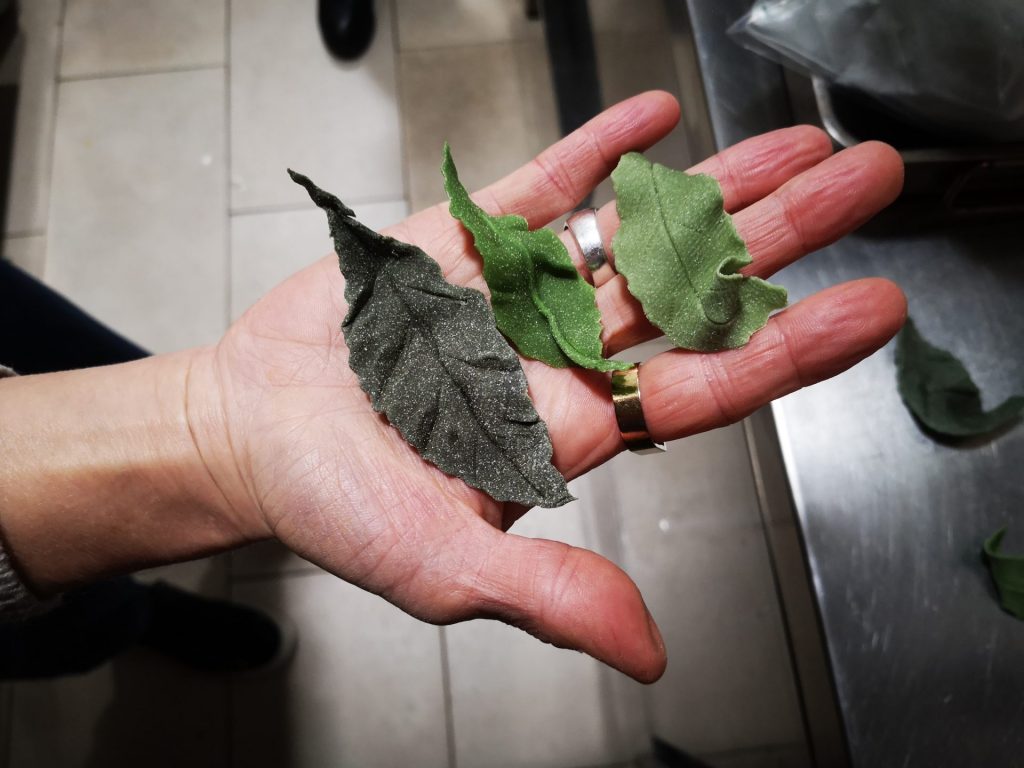
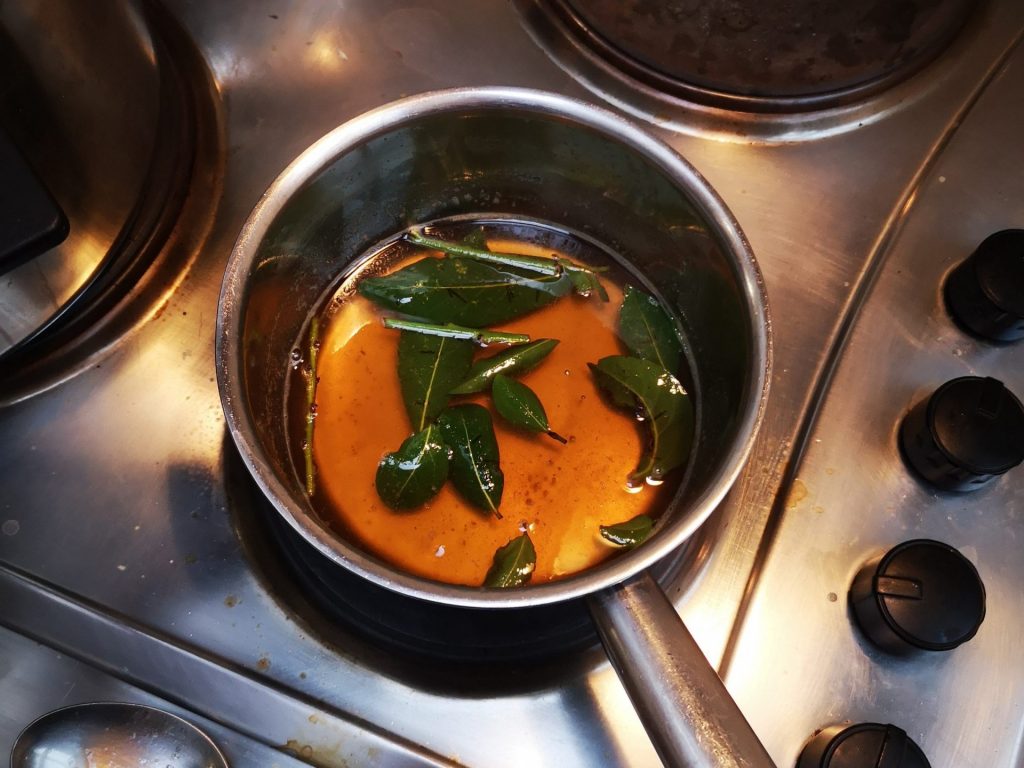
But it’s mostly how I spend time day-to-day that has shifted over the fellowship: from lots of gallery, museum, and site visits in the first half, to more studio time exploring film processes in the second half. I was keen to use this project to both analyse my use of plants thematically and bring them more alchemically into my process; the latter is what is captivating me at the moment. My intention is to make a film about Daphne with daphne (the name for bay-laurel in Greek) and the idea that black & white negative film can be processed in plant-based developers is what sparked this investigation. I knew from other artists that things like nettles, seaweed, wine and coffee would develop film, so I tested bay-laurel and was so excited to find that it worked too.
During your time in Rome, you’ve been learning about 16mm and analogue film. Could you tell us more about this experience?
I’ve made some progress with analogue processes recently. I’m more familiar with the Bolex 16mm camera now and can trust myself to load the film and set the exposures better than I could before. It takes practice, which is hard when the film stock is expensive and often hard to get hold of, but it’s worth it.
Learning to develop 16mm and 35mm film myself is the most exciting part of the project so far. I’ve been brewing infusions of bay leaves, adding soda and vitamin C to make plant-based developers, and taking them into my improvised darkroom in the studio bathroom. I started with test strips and changed the variables of time and temperature until the negatives came out well enough, and then took the plunge of unfurling a 30m reel of film into a bucket like spaghetti to develop it by night. I really enjoy being completely in the dark for ½ an hour of development, with the smell of bay leaf soup and the sounds of swirling liquid and music in a playlist exactly the right length of time for each stage. The biggest thrill is the moment I step out of the darkroom to see if the process has worked and (hopefully) seeing the first images on the tangle of film as I wash it and hang it out to dry. By that time, it’s usually after midnight and I’m exhausted but happy and relieved. It’s such a physically involved process with the plant, the film, the body and liquid suspensions, that going back to purely digital filmmaking will be hard.
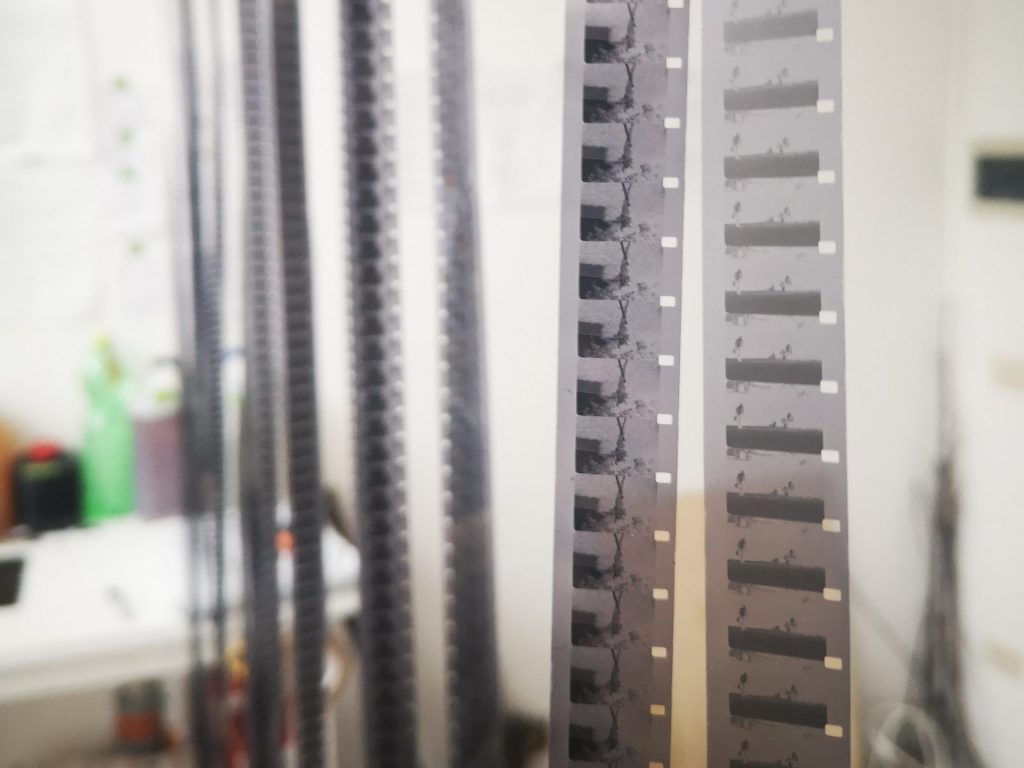
While filming and developing are quite solitary experiences, I’ve been fortunate to speak to some brilliant people about the display of the still and moving images. Visiting Graziano Schiano at Cinema Vintage on the outskirts of Rome is always fascinating. Over several decades he’s built up a collection of projectors, cameras, splicers, viewers, and a huge archive of film prints, and he is very generous in sharing his knowledge of film projection (whether on 70mm, 35mm, 16mm or 8mm) and the history of cinema. Learning some of the technical aspects of film projection from him has been invaluable, and my film-specific Italian vocabulary has improved too!
I’ve also been working with Carlotta Valente at the Studio Bayard darkroom in Pigneto to learn about alternative photographic printing processes. Having processed 35mm film in bay leaf developer myself, Carlotta has been teaching me the cyanotype process to print some of my images on paper and glass, which we then tone in bay leaf soup, darkening the colour. It’s still very early days for my technical skill development, but I’ve learned a lot in the past few months and that wouldn’t have happened without the generosity of such people wanting to share knowledge and experiment together.
